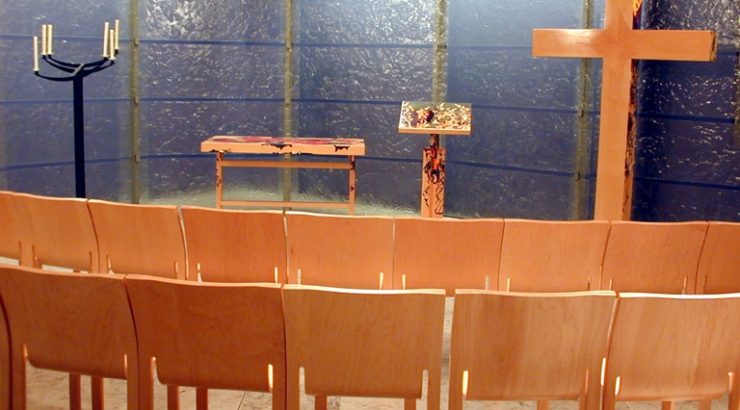
Resurrection Amid the 2020 Pandemic Reflection by Rafael Luévano, Catholic Chaplain
April 29, 2020
For Catholics and all Christians, the Easter season celebrates the most joyous time of year, the feast of the resurrection of Jesus Christ. But how can we be joyous when living in isolation enduring the slow ache of loneliness? What is the timeline for returning to normality? No one really knows. This uncertainty may leave our already frayed anxieties sinking into depression. Gnawing desperation grips us wondering what will happen next. And even if we forgo such challenges, we might just be really bored, every day with the same sludge as the day before. Besides how can we be joyful while the corona virus’s epic death and its consequences scourge our global, national, and local communities? All this is why, this Easter season I ask you to think back once again to the reactions of the apostles and his disciples, both men and women, who witnessed the devastation of Jesus’s horrific death. They were quite clueless about what was to burst forth from that obscurity. In the four Gospels, the details of the resurrection narratives illuminate the witnesses’ utterly fascinating experiences. These narratives reveal the nature of the resurrected Jesus. And they invite us to share the Easter faith.
The apostles, Mary Magdalene, and many others who witnessed the resurrected Jesus were initially left fearful, confused, and—if truth be told—doubtful that Jesus had really come back to life. The Gospel of Mark says, “[The women] made their way out and fled from the tomb bewildered and trembling” (Mk 16:8). These reactions preceded any Easter joy. The resurrected Jesus was too much for them to grasp. The Evangelists go to extremes to show that the risen Jesus was not just spiritually but also physically alive. Jesus had body! For instance, Jesus hungers and asks for something to eat. John’s Gospel specifically points out that Jesus is breathing. And, of course, the apostles and Mary Magdalene all touch him. The famous scene of doubting Thomas is not just about a faithless apostle, but also about a physically resurrected Jesus. Thomas says, “I will never believe … without probing the nail prints in his hands, without putting my finger in the nail marks and my hand into his side” (Jn 20:25). Luke’s Gospel recounts, “In [the apostles’] panic and fright they thought they were seeing a ghost.” Jesus responds, “Touch me, and see that a ghost does not have flesh and bones as I do” (Lk 24; 38, 40). Neither a ghost nor just a “spirit,” the resurrected Jesus had a body that had died and was alive again. This was shocking!
The present coronavirus challenges are real. Yet so too was the resurrected body of the risen Jesus—this is the whole point of the Evangelists’ writings and Christianity itself. The resurrection is neither an abstraction nor solely a spiritual reality—though the latter would have been enough. The resurrection is the saving of both our physical and spiritual selves. Our entire persons. And of all of creation, as Saint Paul reminds us (2 Cor 5: 17-21). If this is not true, for Catholics and Christians, our faith is a sham—downright absurd. The resurrection stands as the most radical truth, unable to be solely grasped by reasoning of the mind but accompanied by an enraptured heart—the two united in burning faith. This is why this Easter season must be more than about mere survival of our current and grave physical, psychological, and spiritual challenges. Instead the resurrected Jesus—and a focus on his resurrected body—means that Jesus experienced all our human joys and sorrows. He shared our lives; he transformed our lives. Everything we now bear posseses a greater, deeper, and new meaning. Jesus’s resurrection offers us abounding hope. And even in these times—or because of them—this can make our heart leap for joy.
Rafael Luévano
Associate Professor – Religious Studies Department
Catholic Chaplain